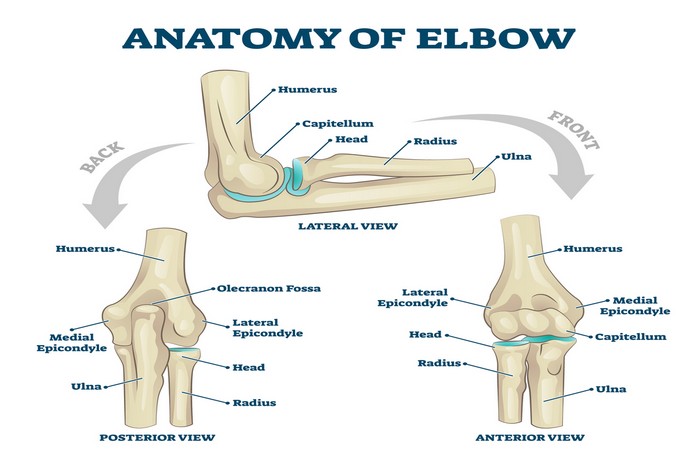How Does The Elbow Work?

You probably think the elbow is a simple articulation between the upper arm and the forearm. If so, you would be surprised to know that this single joint is formed by three joints. The forearm contains not only one but two long bones. Thus, the three articulations of the elbow connect both long forearms bones and reach to the upper arm bone. They are called the humeroulnar joint, humeroradial joint, and radioulnar joint.
The humeroulnar and humeroradial joints are critical for elbow flexion and extension. But when you’re rotating the elbow, that’s the humeroradial joint that is mainly working. The radioulnar joint moves when you bring your palms to the front (supination) or the back (pronation). Combining all these articulations, you can have an extensive range of motion, which goes between 5 and 150 degrees when you’re flexing or extending, 80 degrees when you’re taking the palms to the front (supination), and 75 degrees when you’re taking it to the back (pronation).
Besides the bones and articulations, you have plenty of ligaments in the elbow. One of the most important is known as the anterior medial collateral ligament. This ligament provides most of the stability of the articulation as a whole. Another important ligament is the lateral ulnar collateral ligament. They are both very thick and robust and necessary for joint support.
It is also important to know what nerves cross the elbow because trauma and overuse injuries usually affect them and cause very specific signs and symptoms. They are the median nerve, the ulnar nerve, and the radial nerve.
